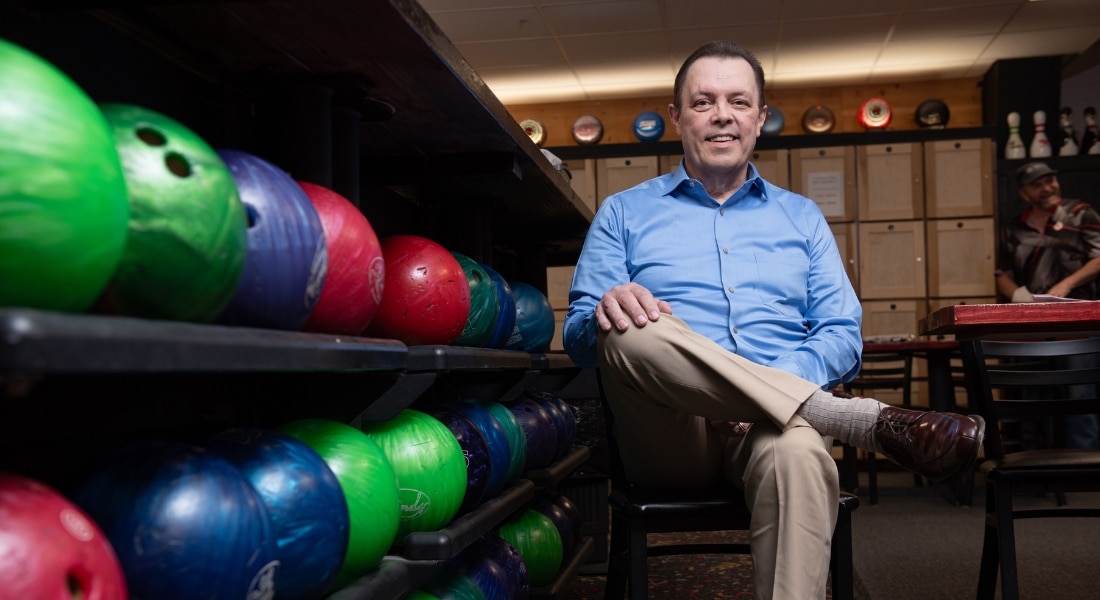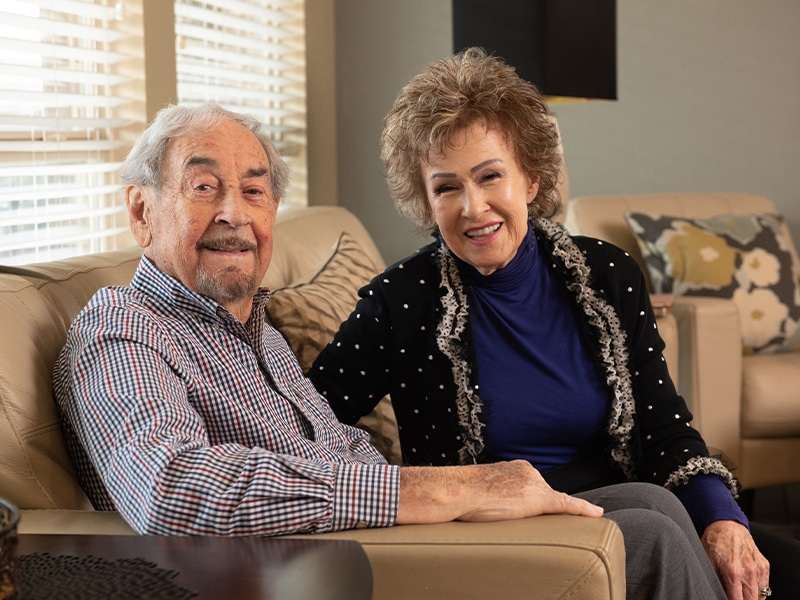As far as James Wann is concerned, a stitch in time saved his life at Methodist Midlothian Medical Center.
Last fall, James passed out at his home in Midlothian, splitting his forehead open in the bathroom. He has suffered seizures since childhood, so he’s lost consciousness before, he says. But this time was different.
“I learned later it was a mild heart attack,” he says. “My son Cody drove me to Methodist Midlothian, and that decision probably saved my life. I don’t think I would have gotten the same reaction at another hospital.”
Rather than stitching James up and sending him home, his doctor suggested he spend the night so the staff could monitor him and run additional tests.
“God works in mysterious ways,” James says. “If not for the stitches, I never would have known I had an issue. And my next heart attack could have been fatal.”

SCARY SPILL AT HOME
In October, James was getting ready to go to Hilltop Lanes in Waxahachie where he’s a mainstay when he was overcome by a dizzy spell in the shower.
“I passed out and fell into the wall,” James says. “That put a large gash over my right eye and bruised my ribs. I woke up and saw blood.”
James cleaned himself up and called for help from his wife, Candi, and Cody. His son rushed him to Methodist Midlothian, just down the road.
In the emergency room, James was treated by Brent Treichler, MD, emergency medicine physician on the medical staff at Methodist Midlothian. Twenty stitches later, James was admitted for the night because the doctor didn’t like the looks of his bloodwork.
“We use heart scores and other tools that help us determine which patients are safe to go home and which need further observation,’ Dr. Treichler says. “It was clear to me that James fell into that high-risk category.”
That’s because blood tests revealed that James’ troponin levels were elevated. The protein is only found in heart muscle cells and typically only enters the bloodstream when there’s damage to the heart muscle.
Ultimately, doctors determined that James had suffered a heart attack, and suddenly 20 stitches were the least of their concerns.
“If I ever get the chance to meet Dr. Treichler again,” James says, “I’m going to hug him and tell him how much he means to me.”
WHAT’S A CATH LAB?
Learn more about what cardiac catheterization teams can do with Roberto Wayhs, MD, interventional cardiologist on the medical staff at Methodist Midlothian.
99% BLOCKAGE IN ARTERY
James was next transferred to the cardiac catheterization lab, where a team led by Viral Lathia, MD, cardiologist on the medical staff, was waiting for him.
“We paid attention to his symptoms and those lab abnormalities,” Dr. Lathia says, “and that led us to find this life-threatening lesion in the blood vessel.”
Once James was in the cath lab, Dr. Lathia and his team used a catheter to place a tiny wire mesh tube, known as a stent, into an artery that was 99% blocked, restoring the blood supply to his heart.
“James is lucky he woke up,” Dr. Lathia says, “Otherwise he could have had a similar episode at home or while he was driving.”

‘SECOND SHOT AT LIFE’
James would spend the rest of his hospital stay in the ICU, being monitored for any further trouble. He raved about the staff there, as well as the “unbelievable care” he received in the ER and cath lab.
“Every time someone walked into that room, they had smiles on their faces,” James says. “I felt like I was their only patient because the care that I was getting was just top-notch.”
Today, James has fully recovered from his heart attack and made some changes to his diet and lifestyle that allowed him to lose more than 100 pounds. He hopes living healthier will spare him from the quadruple bypass surgery his father had in the 1990s.
“I’m able to do a lot of things now that I haven’t been able to do in quite a while,” James says. “The care I received at Methodist Midlothian has given me a second shot at life.”






